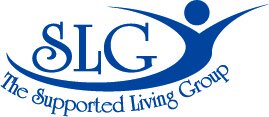Rethinking the “Autism Spectrum”: Moving Toward Person-Focused Supports
The term “Autism Spectrum” has become a cornerstone in how we understand and describe autism. It suggests a wide range of presentations, from individuals requiring substantial daily support to those who live independently but experience social and sensory challenges. But as a recent article from The Conversation points out, the “spectrum” model may be reaching its limits in how effectively it captures the complexity of lived experiences with autism Read the full article here
Why the Spectrum Model Falls Short
The “spectrum” metaphor was intended to recognize diversity, but in practice, it often reduces individuals to a placement on a linear scale: more or less “autistic.” This framing can:
Oversimplify individuality: Two people with the same diagnosis can have vastly different strengths, challenges, and needs.
Contribute to stereotypes: “High functioning” and “low functioning” labels often follow the spectrum language, limiting expectations and overlooking nuance.
Hinder support planning: Services may be designed based on where someone “fits” on the spectrum rather than on their personal goals, environments, and adaptive needs.
As The Conversation article highlights, autism may be better understood as a multidimensional profile, one where individuals have unique constellations of abilities, sensory preferences, and support needs rather than fitting neatly on a sliding scale.
The Case for Person-Focused Supports
At SLG, our work with individuals on the Autism Spectrum Disorder (ASD) Waiver reinforces this perspective: meaningful support is not about labels, but about people. Each individual brings a distinct set of abilities and challenges shaped by their environment, trauma history, cultural background, and personal aspirations.
Shifting away from a strict spectrum metaphor opens the door to person-focused care:
Holistic assessment: Considering cognitive, emotional, sensory, and social domains together.
Strengths-based planning: Building on personal talents and interests rather than emphasizing deficits.
Context-sensitive supports: Recognizing that needs differ at school, at home, at work, and in the community.
Flexibility over time: Allowing supports to evolve as individuals grow and circumstances change.
Balancing the View
That said, it’s important to acknowledge that the spectrum concept has played a valuable role. It helped move the field beyond outdated, fragmented categories like “Asperger’s” or “PDD-NOS” and provided a unified framework for advocacy and service funding. Many families and self-advocates continue to find the term helpful when explaining the diversity of autism to others.
Completely abandoning the spectrum metaphor may risk confusion or loss of a shared language. The challenge, then, is not necessarily to discard the concept entirely, but to expand it, shifting toward frameworks that respect individuality while retaining the benefits of collective identity.
Moving Forward
As the conversation around autism evolves, so too must our systems of support. By embracing person-centered approaches, Connecticut’s ASD Waiver and similar community-based programs can ensure that services are not bound by broad categories but tailored to the unique voices, perspectives, and needs of those they serve.
Autism is not a line; it is a constellation. And by recognizing that truth, we can design supports that honor the full humanity of every individual.
For more information on SLG's range of ASD Waiver and private pay autism support services, call 860-774-3400.

